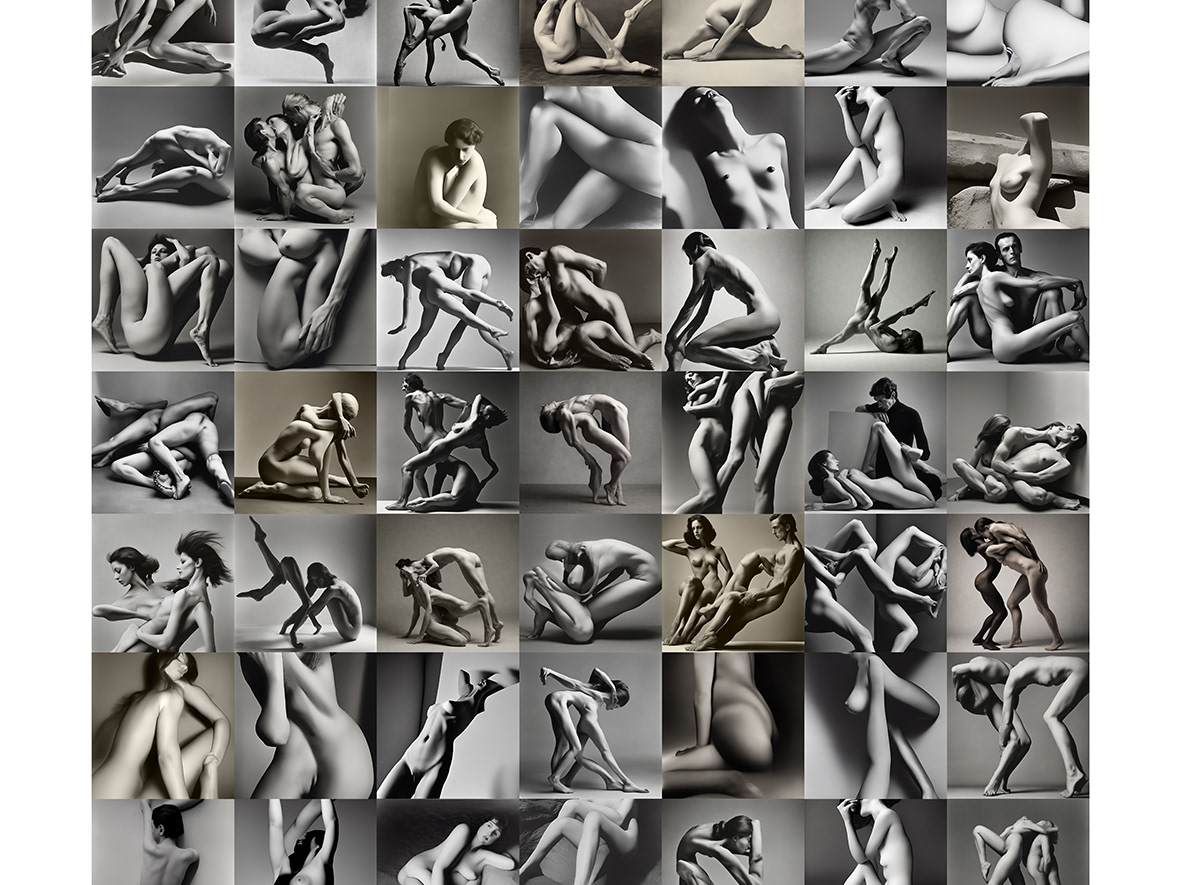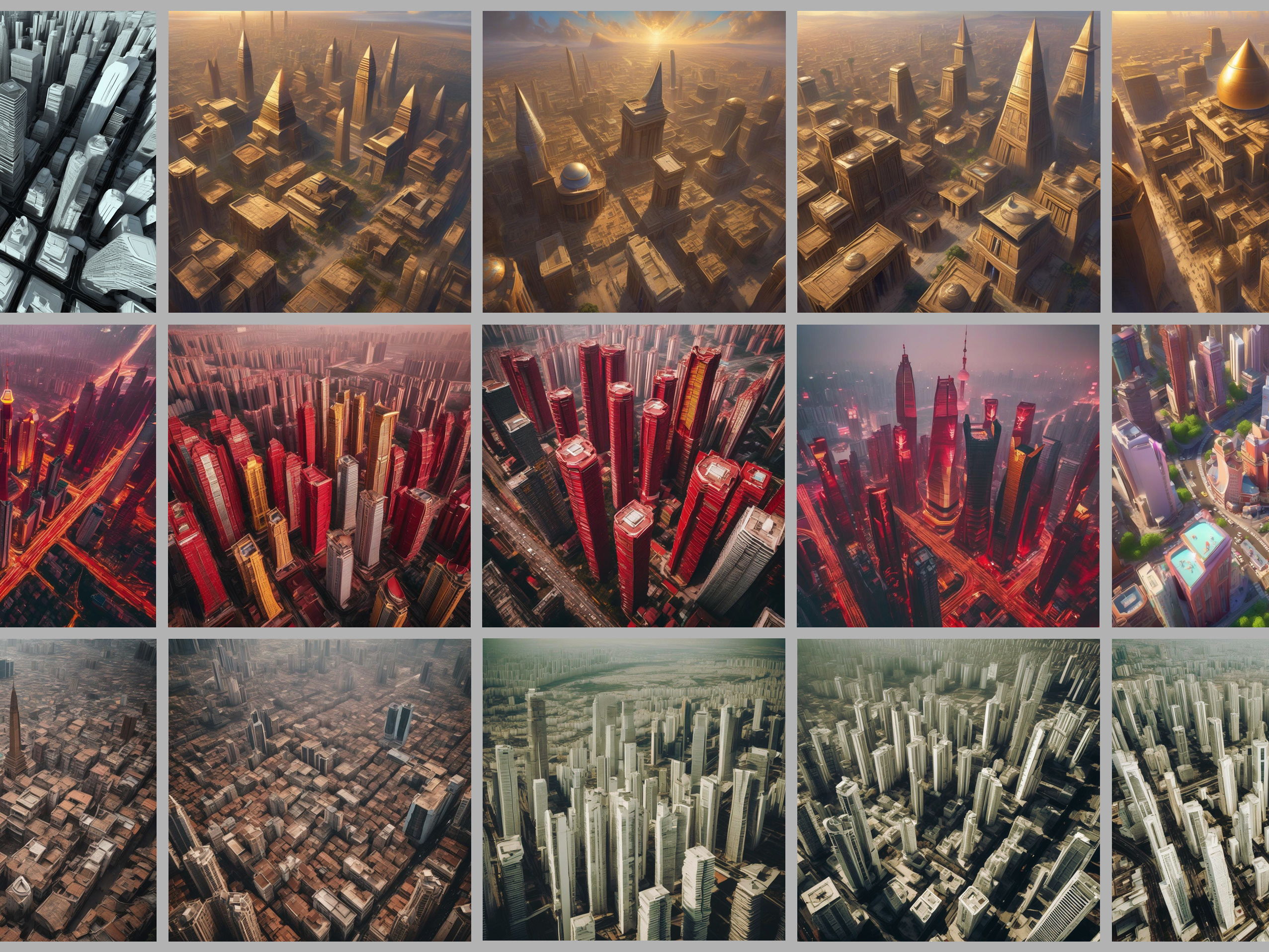In March last year, the visual artist Boris Eldgasen refused a Photography prize: the “Sony World Photography Awards.” In fact, the image for which he had been honored had been generated by Generative Artificial Intelligence. It wasn´t a photograph.
Eldgasen called this method promptography.
I adopt the term for those images which, while being graphically similar to Photography, are in fact entirely different in their essence.
Eldgasen called this method promptography.
I adopt the term for those images which, while being graphically similar to Photography, are in fact entirely different in their essence.
The Promptography, as a relative of Photography coming from a such a distant place, is not more than Photography. Nor is it less. It's just very very diferente.
Promptography is no longer new. Promptographs are increasingly becoming part of our lives.
Nevertheless, i think it is still worth reflecting on the matter:
As the term itself indicates, promptographs originate from a prompt consisting of a text, an image, or a combination of both, delivered to an algorithm. This generates something, that can be a new image. Instead, by its etymology, "Photography” refers to the incidence of light on a material that is sensitive to it (*).
So… Nothing in common between Photography and Promptography.
Promptography is no longer new. Promptographs are increasingly becoming part of our lives.
Nevertheless, i think it is still worth reflecting on the matter:
As the term itself indicates, promptographs originate from a prompt consisting of a text, an image, or a combination of both, delivered to an algorithm. This generates something, that can be a new image. Instead, by its etymology, "Photography” refers to the incidence of light on a material that is sensitive to it (*).
So… Nothing in common between Photography and Promptography.
(*) The Greek word "graphos" (γραφή) translates as "writing" or "drawing." In the context of photography, it is part of the term "photography," which comes from the Greek words "photo" (φως), meaning "light," and "graphos," meaning "to write" or "to draw." Thus, photography can be understood as "writing with light" or "drawing with light," reflecting the process by which images are created using light to capture scenes or subjects on a photosensitive surface. (www.quora.com)
To be clear: I have no prejudice, or fear, in what concerns Promptography. On the contrary, I use it myself, since two years now.
A glance, or any idea, that could lead to the use of a light/sensor system, thereby forming an image, that is what precedes Photography. This obviously includes all analog images ever used, for over the last two hundred years, such as rayograms, cyanotypes, pinhole images, or daguerreotypes...
A glance, or any idea, that could lead to the use of a light/sensor system, thereby forming an image, that is what precedes Photography. This obviously includes all analog images ever used, for over the last two hundred years, such as rayograms, cyanotypes, pinhole images, or daguerreotypes...
In fact, thus being, any image generated by the sun on human skin, through shadowing, would also be a photograph. (GETTY IMAGES)
What leads to Promptography is a conjecture, a reasoning, a theory, a fantasy; without the intervention of light or any sensitive material. These data, or input, is transmitted to a machine through one prompt, then another, and another... The refinement or counterbalancing of each of these factors generates promptographs. Many. The author makes the selection and edition. That will be the procedure.
In contrast, Photography encompasses the description, even narration, of a moment; a memory. It can also generate completely abstract images. But there will always be a conformity between light and the material sensitive to it.
In contrast, Photography encompasses the description, even narration, of a moment; a memory. It can also generate completely abstract images. But there will always be a conformity between light and the material sensitive to it.
A photographic report on the French Revolution of 1789... A fiction. An absolute lie. But it could, perhaps, constitute a good project for Promptography. (Promptograph. ©️ Jorge Pedra)
“Twin Sisters In Love” - Annika Nordenskiöld, Suécia. Premiado no Ballarat International Foto Biennale, na Austrália. Promptografia
Promptography refers to an alternative pseudo-reality. It responds to reasoning and can even lead to the falsification of a memory, generating a lie. Thus, it can be used maliciously, masquerading as a photograph. This is a truth we must hold on to forever. In the end, everything depends on honesty.
Promptography and Photography both have their places in Art and Communication. I have no doubt: they are not “enemy” techniques and do not compete with each other.
There will continue to be many Photography artists. Others will embrace Promptography: knowing nothing about photography, ignoring everything that concerns lenses, diaphragms and shutters, and treating Promptography in an appropriate manner, as na independent technique or art.
Photography and Promptography can only be confused when there is dishonesty in authorship.
A fairly common attitude that I want to vehemently repudiate: Thinking that a promptograph is perfect because it looks like a Photograph… I think that idea is naïve, even imbecilic.
In truth, promptography annuls itself, and should be ashamed, when it does nothing more than resemble a photograph, encompassing a likely reality. A promptography may have graphic characteristics similar to a photograph, but not the content. It is vain, desperately ridiculous, to present a promptography containing, let’s say, a perfect close-up photograph of a young woman with blue eyes...
Photography and Promptography can only be confused when there is dishonesty in authorship.
A fairly common attitude that I want to vehemently repudiate: Thinking that a promptograph is perfect because it looks like a Photograph… I think that idea is naïve, even imbecilic.
In truth, promptography annuls itself, and should be ashamed, when it does nothing more than resemble a photograph, encompassing a likely reality. A promptography may have graphic characteristics similar to a photograph, but not the content. It is vain, desperately ridiculous, to present a promptography containing, let’s say, a perfect close-up photograph of a young woman with blue eyes...
Promptographs after elementar prompts ©️ Jorge Pedra
As mentioned above, in reference to Boris Eldagsen's work, a promptography can ressemble as a photograph. The opposite can also happen: the image “Flamingoone” by Miles Astray was mistaken for promptography—it was, in fact, an improbable image, but indeed a photograph.
Promptography does not assume what is probable, nor does it exists to make photographs that could correspond to reality. Instead, promptography theorizes about the impossible or the highly improbable.
Promptography is, first and foremost, a technique, Photography is it too. It can also be an art; this always depends on the author, just as it happens with Photography. They could be two sides of the same coin. While close practices, they are opposites, like antipodes. Promptography is suitable for producing all kinds of images. But surely can not replace Photography.
It is evident that promptographs can also be used in mixed media, combining with all kind of techniques, such as painting, collage, sculpture — as it happens with photography, producing new images. That is a a different type of artistic technique within the visual arts.
It is evident that promptographs can also be used in mixed media, combining with all kind of techniques, such as painting, collage, sculpture — as it happens with photography, producing new images. That is a a different type of artistic technique within the visual arts.
Promptografias. ©️ Jorge Pedra
To think, conjecture, anticipate what can be seen, to see with eyes closed. To be persistent. To create much, creating and destroying, to elaborate a multitude of prompts, increasingly detailed, descriptive, or even narrative. That will the attitude of the promptographer.



